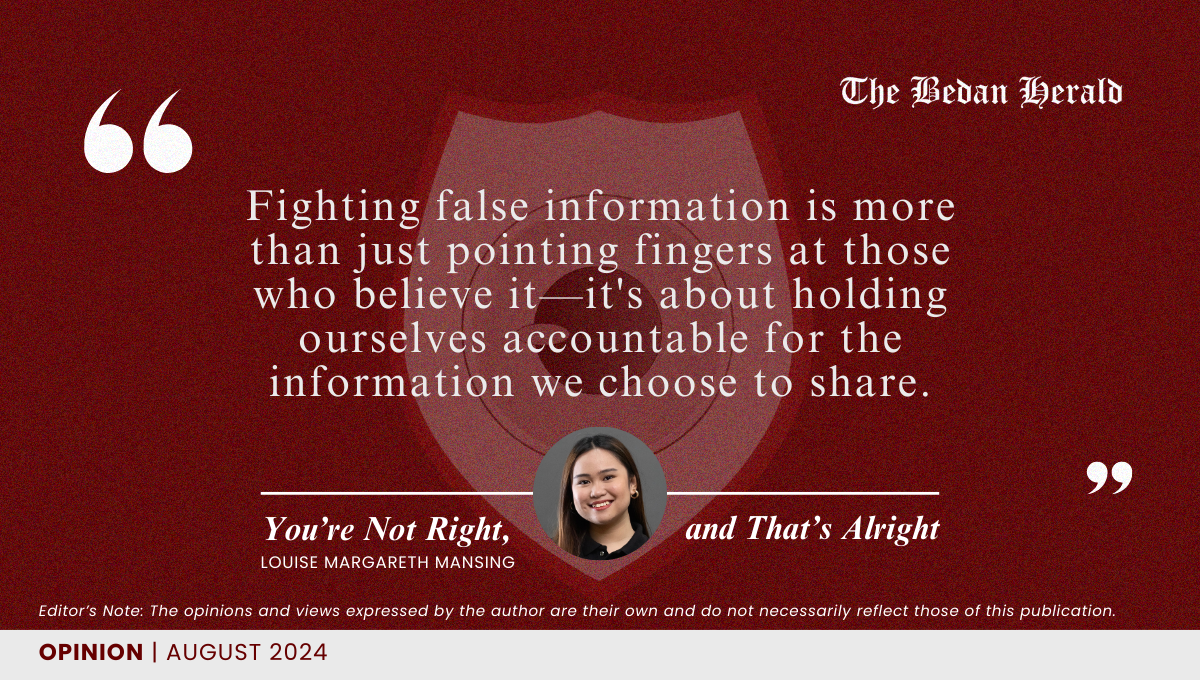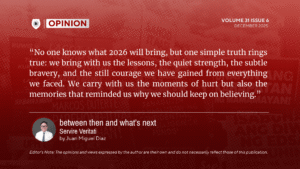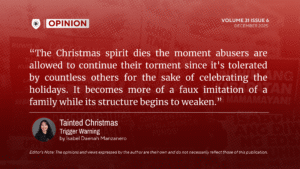By Louise Margareth T. Mansing | August 21, 2024
You’re Not Right, and That’s Alright
IMAGINE – while having dinner, someone you love begins to talk about a YouTube video they recently watched. The YouTuber in that video was convinced that an Algerian Olympic boxer was unfairly competing because they believed that the athlete was transgender. Even though you try to clarify that this is misinformation, they won't listen, even though a Google search can easily verify the truth. Frustrated, you begin to question how we came to be in a world where fake news spreads like wildfire and comments from random vloggers are treated as truth.
Many of you probably expect me to talk about how grave the “fake news” problem has spread or rant about how exhausting it is to deal with “friends” or—dare I say it—family who get their news from TikTok and YouTube. And sure, that’s precisely what I’m writing about. But here’s the thing: the problem isn’t just that misinformation has spread. Everyone already knows that.
What I initially thought was the “grave” part of the whole issue could be dug more profound than even I am prepared to admit. The real problem goes deeper into the very core of how we consume information and, more importantly, how we convince ourselves that we’re better than those who fall for fake news. Some people do their part in sharing infographics, discussing how dangerous it is on the internet, and even openly advocating against misinformation. And yet, some of this knowledge is only surface-level.
I’ve seen people who love to repost stories on their Instagram or have reshared a post on their feed, talking about news and the importance of the truth. But here’s the thing: how often do they practice what they preach? How often do we? Sadly, many do these things without clicking on the article or even cross-checking with other sources. “Transgender yung Algerian boxer sa Olympics!”, “Hindi patas yung laban ng lalaki sa babae.”, “Grabe! Pati ba naman sa Olympics may mandadaya.” – messages like this went rampant online with the issue regarding Olympic Gold Medalist, Imane Khelif. Khelif, who got into a gender row scandal after Italian boxer Angela Carini withdrew from the competition, was thrown into a hate campaign with many questioning her femininity, sexuality, and eligibility to compete. It spread like wildfire, confirming what some people already believed or feared. Never mind that it wasn’t true—confirmation bias kicked in, and suddenly, a rumor turned into a widely accepted “fact.”
This is the point when confirmation bias comes into play— it’s that sneaky voice in our unconscious that convinces us we're correct, given that we already believe it. It's not only about false news; it's about all of us allowing our prejudices to lead us. When we encounter a message that supports our beliefs, we don’t question it. We don’t verify it. We just share it, believing that we are helping to disseminate the truth when, in fact, we’re doing the exact opposite.
So, what’s next? Well, this might feel like a difficult pill to swallow – but the solution starts with accepting a simple idea – that not all we “know” is correct. We, as humans, are as susceptible as the next to a convincing false “truth.” Before you share the next post, ask yourself if you have confirmed it. Have I examined several sources? Or am I simply adding to the problem I profess to be opposing? Finally, fighting false information is more than just pointing fingers at those who believe it—it's about holding ourselves accountable for the information we choose to share. After all, confirmation bias is a powerful force, but we can overcome it if we are willing to try.
Volume 30 | Issue 1




